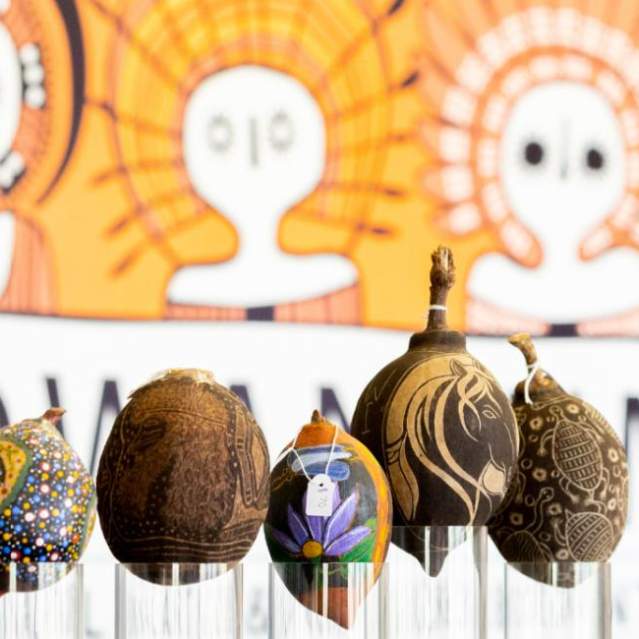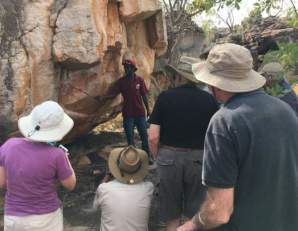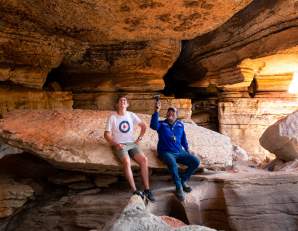Kimberley Rock Art
Visitors to the Kimberley region of Western Australia have the opportunity to discover one of the world’s oldest and richest rock art regions in some of the most spectacular scenery in Australia.
You can seek some of these sites out on your self-drive trip along the Gibb River Road, or visit more remote sites on a Kimberley Coast cruise, a scenic flight, or a trip to one of the coastal lodges.
Two major traditions of rock art are seen in the Kimberley - Gwion Gwion Bradshaw figures and Wandjina rock art. Claimed to be some of the earliest figurative art, the Gwion Gwion or Gyorn Gyorn paintings were first seen by European eyes in the late 1890’s. Their distinguishing feature is the stick-like human figures, often depicted with adornments of tassels or sashes.
The Wandjina is highly revered as the Supreme Being spirit for the Worrora, Ngarinyin and Wunumbal tribes in the Kimberley. These language groups make up the Mowanjum Community located 15km outside of Derby. The artists at the Mowanjum Aboriginal Art & Cultural Centre depict Wandjina and Gyorn Gyorn figures based on the cave paintings central to their culture.
The Wandjina art tradition was brought to wider attention in the Sydney Olympics in 2000, when a major piece by senior law man and artist Donny Woologoodja featured during the opening ceremony. In 2016, Wandjina art was also projected onto the sails of the Sydney Opera House as part of the Vivid Festival.
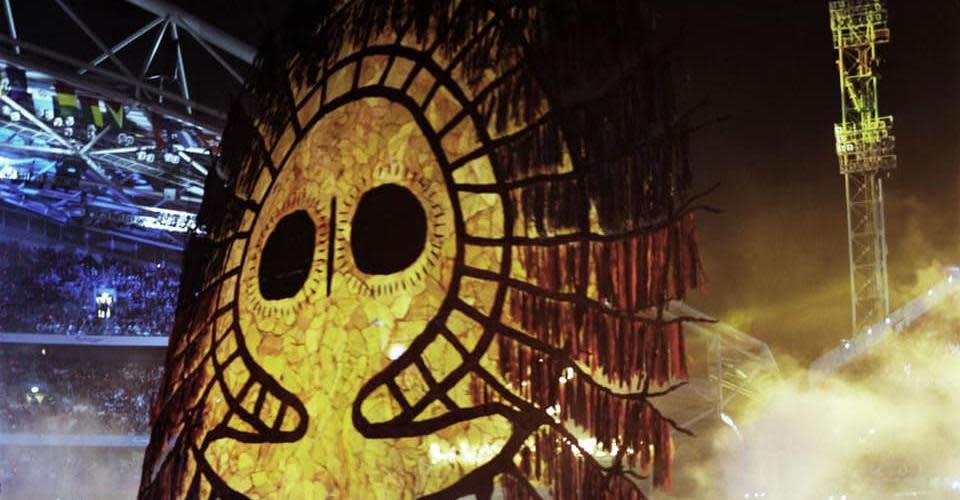
Experience Kimberley Rock Art
Locations
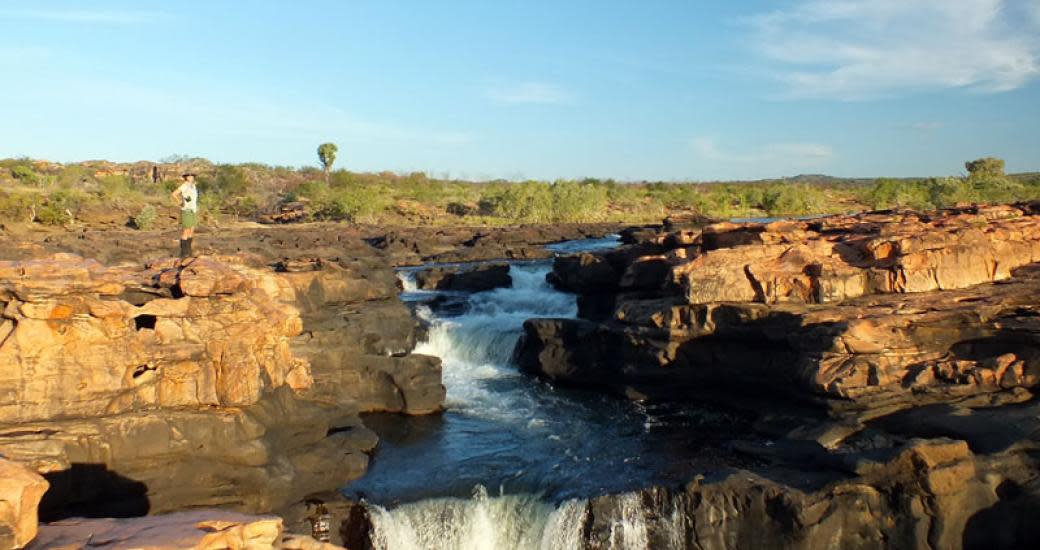
1. Mitchell Plateau
The Mitchell Plateau is home to some of the finest examples of the Kimberley rock art traditions. The Munurru art site features art in both the Bradshaw and Wandjina traditions which you can experience on a tour with the Unuguu Rangers. Further sites can be seen along the walking route to Mitchell Falls, and by extending your adventure to include a drive to Surveyors Pool. At Kalumburu Community, visitors can take a tour or a self-guided rock art walk.
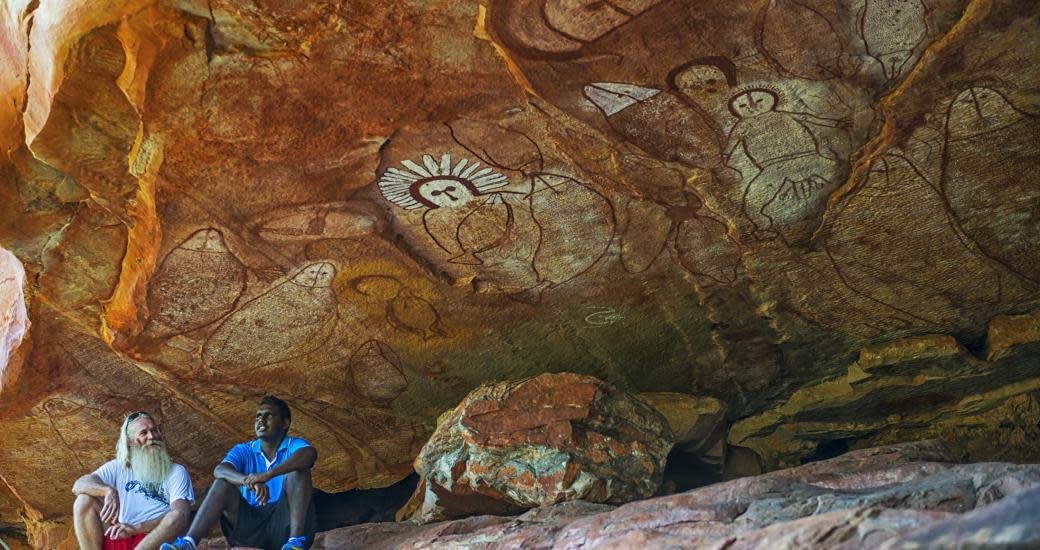
2. Kimberley Coast
Significant rock art sites are located along the Kimberley coastline and on the islands. Visit with expedition cruises to meet rock art and cultural guides at locations such as Vansittart Bay, Eagle Falls and Raft Point as well as the Munurru site. From the remote coastal lodges, guided tours will also take you to secluded rock art sites.
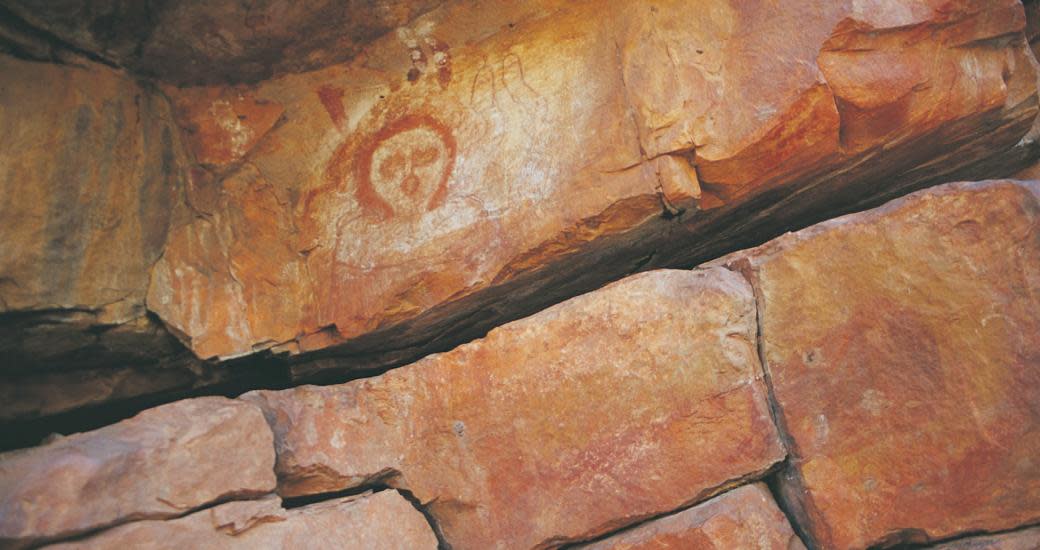
3. Gibb River Road
Along the Gibb River Road, rock art may be seen along the bush walk tracks leading to the gorges, including at Adcock Gorge, Manning Gorge and Galvans Gorge, and at waterholes at other locations in the area. Further inland, visitors to Tunnel Creek may also encounter rock art on their way through the caves.
ROCK ART TOURS WITH TRADITIONAL OWNERS & CUSTODIANS
Mowanjum Aboriginal Art And Cultural Centre
The Mowanjum Aboriginal Art and Cultural Centre is a creative hub for the Worrorra, Ngarinyin and Wunumbal tribes, who make up the Mowanjum community outside…
Munurru (King Edward River) Art Site Tours
Uunguu Rangers & Traditional Owners at Ngauwudu (Mitchell Plateau) are now offering guided…
Girloorloo Tours Mimbi Caves
Your Gooniyandi guides invite you to join them on an inspiring guided tour of one of…
Visiting Kimberley Rock Art Sites
Visitors should ensure they have the correct visitor permits for the areas they wish to visit. If you are travelling with a tour group, your tour operator will arrange the visitor pass on your behalf. If you are travelling on a private vessel, charter aircraft or are a bushwalker, please be aware that you will also need to have the relevant Visitor Pass or Permit.
Visitors to Dambimangari Country must purchase a Damginangari Visitor Permit and in some locations must be accompanied by an accredited Traditional Owner guide. More information, and contact details to purchase the Visitor Permit are available here.
All visitors to Wunambal Gaambera Country, which includes Ngauwudu (Mitchell Plateau), must purchase an Uunguu Visitor Pass (UVP) from $45pp. The UVP provides travellers with Traditional Owner permission to visit approved Visitor Locations, including Punamii-Uunpuu (Mitchell Falls). More information and online purchase of the UVP is available here.
Visitors to Kalumburu Community must obtain a Visitors Permit from the Community Resource Centre or the Uraro Store.
In addition, visitors to Kalumburu and other Aboriginal Reserve areas in the Kimberley region must obtain an Entry Permit (free). You can apply online from the Department of Aboriginal Affairs, or call 1300 651 077. You should apply for this before you leave.
Visitors to Kimberley rock art sites are requested to respect these sacred and historically important sites. Please keep to any marked walkways and take nothing away but memories. If in a confined space at a rock art site, please take particular care not to wear a backpack, bag or carry any solid item such as a camera tripod or walking stick that may brush against a painting.
More information on Kimberley rock art
A wide range of books and other information on Kimberley rock art provide cultural, historic and geological information which visitors will find of interest. A small selection is included below, and these and other titles can be found in local bookshops, visitor centres and online.
Keeping the Wanjinas Fresh, Donny Woolagoodja and Valda Blundell, Fremantle Press (2005). This book traces the story of the author's cultural inheritance, as well as the role his father played in maintaining sacred Wandjina cave paintings, and has become a classic publication for the many people interested in learning more about the unique Wandjina beliefs of the Western Kimberley peoples.
Produced by the Wunambal Gaambera People and the Dambimangari people, We Are Coming to See You shares the Wangina Wunggurr Culture as a modern way to leave our Wanjina Wunggurr culture story to their children and future generations. It is also for those other people who are interested in the Wanjina-Wunggurr culture and in particular the meanings of images and stone arrangements.
Kimberley Foundation Australia - website
Kimberley Foundation Australia is a research organisation which takes a multi-disciplinary scientific approach to understanding Australia’s deep history of Aboriginal culture and environmental change to establish their importance in the global narrative of human origins. Their website provides a wealth of information on rock art in the region.



